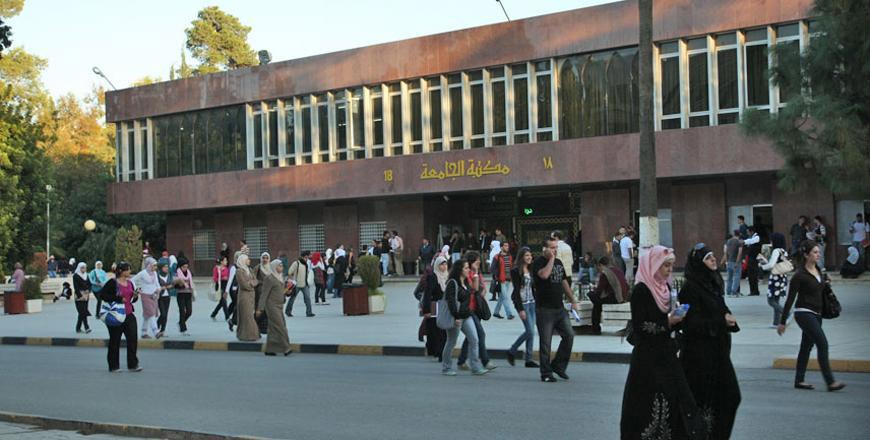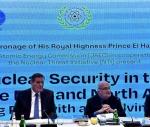You are here
Higher education authorities have plans to encourage scientific research
By Dana Al Emam - Jan 15,2017 - Last updated at Jan 15,2017
AMMAN — Improving the ranking of Jordanian universities in international ranking indices requires promoting a culture of applied scientific research at higher education institutions, experts agreed.
Speaking to The Jordan Times over the phone on Sunday, higher education experts said there is room for improving the overall performance of Jordanian universities in worldwide rankings, if challenges are addressed properly.
Higher Education Minister Adel Tweisi said scientific research and related products, including patents and citation of research papers conducted at the institution, comprise up to 80 per cent of the evaluation criteria applied by prestigious international indices, such as the Shanghai ranking.
None of the Jordanian universities has made it to the 2016 Shanghai ranking, which ranks the top 500 universities worldwide.
In the QS 2016/2017 ranking, the University of Jordan (UJ) ranked within the 551-600 category internationally, while the Jordan University of Science and Technology (JUST) scored 651-700, both under the three-star category.
In the Times Higher Education world university rankings 2016-2017, JUST fell within the 601-800 bracket, while the Hashemite University and UJ ranked 801+.
Commenting on the performance of Jordanian universities in scientific research, the minister said the majority of conducted research is theoretical, highlighting the need for applied research that helps achieve development and address issues of national priority.
"This does not mean that our universities are not progressing, they do progress but at a very slow pace compared to advanced universities around the world," he commented.
Meanwhile, he drew a connection between the diminishing governmental support to public universities and the universities' need to increase revenues, which is realised by accepting large numbers of students, particularly in the parallel programme.
The large number of admitted students in the parallel and regular programmes adds to the workload on instructors and consequently hinders their ability to conduct research, he said.
Dean of Academic Research at the UJ Shaher Momani said the humble performance of Jordanian universities in these indexes is the result of failures to address several challenges facing scientific research, including the insufficiency of human resources and funds, as well as legislative impediments.
He elaborated that the sector needs a comprehensive strategy designed to update regulations governing scientific research into more flexible rules, increase funds from the private and public sectors, allow the establishment of specialised research centres, facilitate networking among researchers and academics, as well as incorporate the scientific research culture at the school and undergraduate levels.
“The majority of conducted research is done for promotional and financial purposes, not for advancing knowledge,” he said, noting that undergraduate students “lack the basic scientific research skills”.
Higher Education Accreditation Commission President Bashir Zu’bi agreed, calling for integrating research programmes for undergraduate students every year, and engaging students in all majors by requiring them to conduct research-based graduation projects.
“Undergraduate students are not taught research methods, and they are not aware of their significance. Also, instructors rarely require their students to submit scientific papers and they only rely on examinations” as a tool to measure achievement, he told The Jordan Times.
Regarding funds, Momani noted that Jordanian universities spend 0.3 per cent of their budgets on scientific research, while average international spending reaches 3 per cent.
While Tweisi agreed with Momani on the “rigidity” of regulations governing group research, which is essential in the fields of science, he disagreed with claims about lack of funding.
The minister explained that the ministry entails all private and public universities to allocate 5 per cent of their budgets for scientific research and scholarships, noting that most universities do not spend these allocations, which end up returning to the Scientific Research Support Fund (SRSF).
Furthermore, the SRSF has so far provided nearly JD59 million to support valuable and promising scientific research projects, with funds reaching nearly JD500,000 for some projects, he said. In addition, foreign funds are also available for applied research.
The problem, according to the minister, lies in the fact that some academics do not have the needed capacity to carry out applied research for development and register patents.
He added that researchers often do not seize the capacity-building opportunities offered at the Higher Council for Science and Technology, nor the networking opportunities through the EU’s Erasmus programme.
For example, the scientific research award for this year was withheld due to the lack of applications with added value, he said, an issue that Momani disagrees with, citing the “brain drain” of Jordanian scientists to Arab Gulf countries, Europe and the US for better financial conditions and research facilitations.
To encourage applied scientific research at Jordanian universities and promote a culture of quality research, Zu’bi said the commission will launch on Monday a national ranking index for local universities for the first time, with scientific research forming 25 per cent of the overall evaluation.
The ranking will consider the type of publications and the reputation of the journals they were published in, adding that no local research papers were so far able to address pressing issues, such as energy, water and transportation.
Tweisi underlined that the draft higher education law, which will be referred to the Cabinet this week, includes a provision on forming a national research commission that will be tasked with looking into impediments and address them.
Also, the ministry is currently reviewing university admission regulations to gradually minimise enrolment in programmes that are less preferred by employers, as well as expanding efforts to decrease admission rates, a matter that will reduce pressure on instructors.
Related Articles
AMMAN — Three Jordanian universities are among the top 28 academic institutions in the Arab world, according to Times Higher Education’s ran
The Scientific Research Support Fund (SRSF) on Monday named the winners of the distinguished researcher award in two fields.
AMMAN — The Ministry of Higher Education and Scientific Research on Wednesday signed a cultural exchange agreement with the Palestinian Educ
















